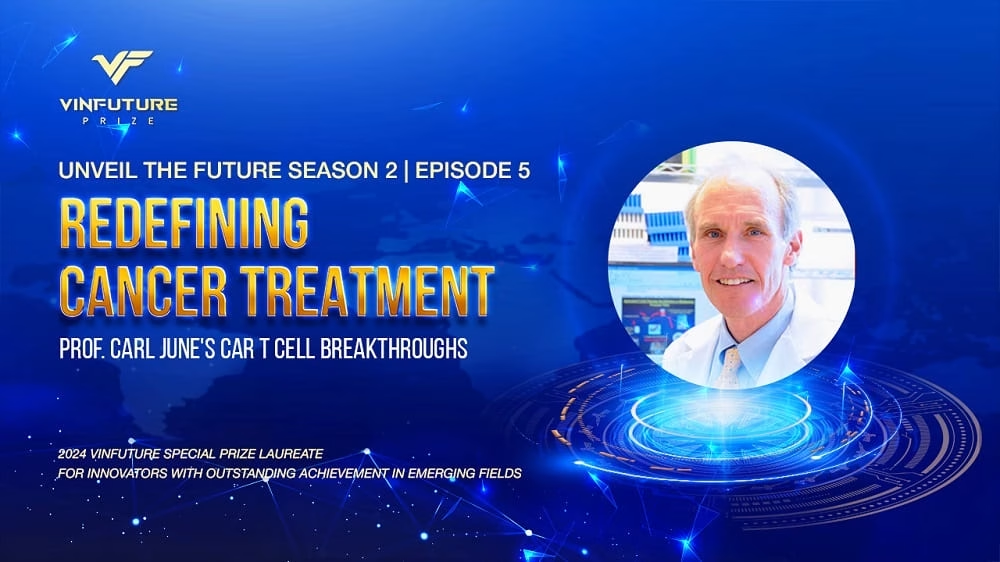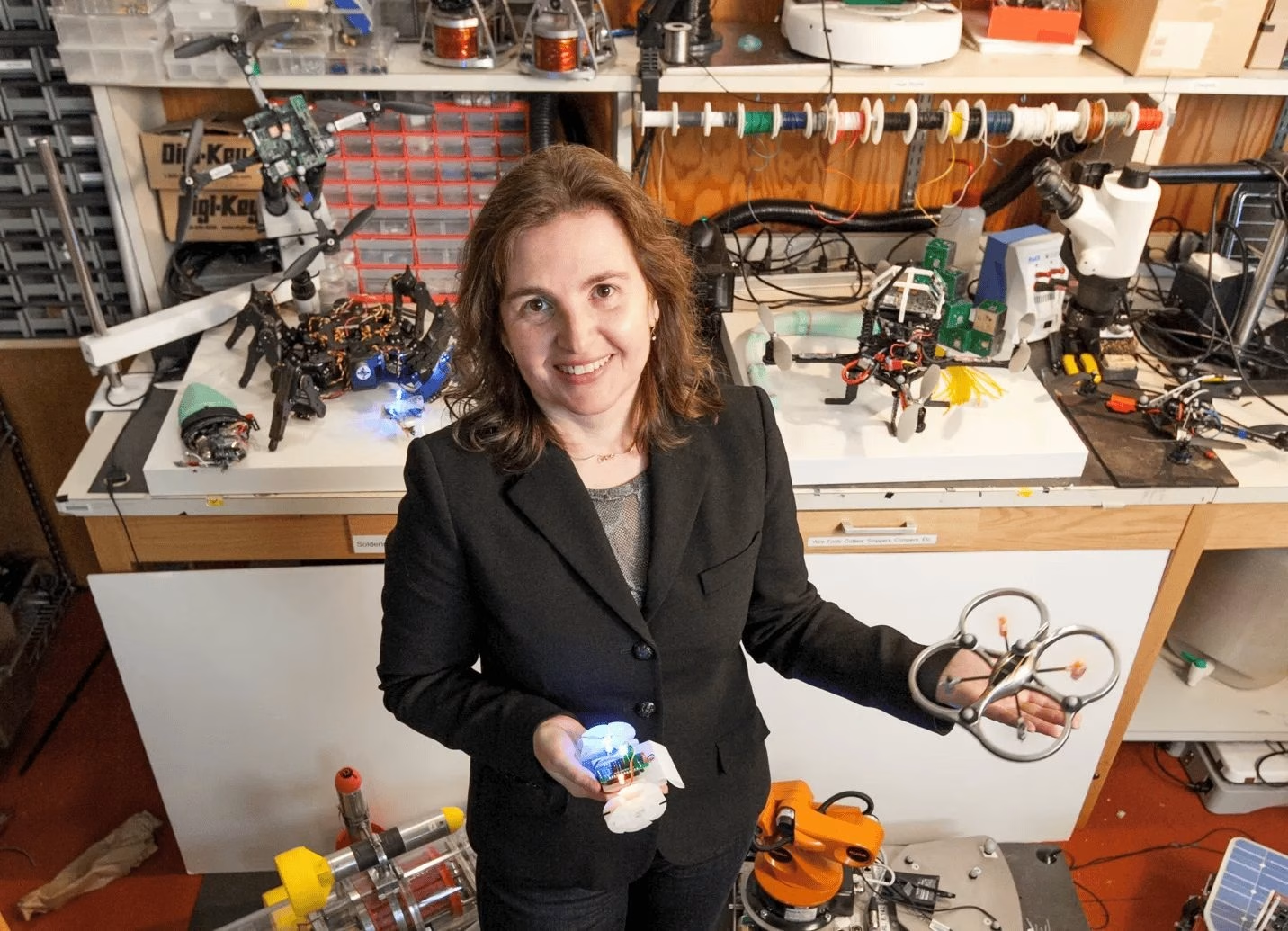– How has receiving the 2023 VinFuture Special Prize for the discovery of GLP-1 influenced your ongoing research, particularly regarding obesity and neurodegenerative diseases?
Prof. Drucker: These awards provide invaluable support in pushing the boundaries of scientific discovery. As the VinFuture Prize gains prominence, having GLP-1 science acknowledged as a recipient also helps elevate the global understanding of how it can transform healthcare.
Moreover, the recognition has been incredibly motivating – not just for me, but for the entire team in my lab, including our graduate students and trainees. This is also one of the most valuable contributions that VinFuture Prize makes – engaging young people. I see that VinFuture is already doing this remarkably well.
When we visited Vietnam, we met with many young scientists, and I was impressed by VinFuture’s strong efforts to inspire and connect with them. This is incredibly important. We need the next generation to embrace science, pursue research careers, and experience the excitement of scientific discovery. I encourage VinFuture to continue and expand these efforts because investing in young talent is the key to a future filled with groundbreaking innovations.
Beyond diabetes
– Over the past year, GLP-1 has already revolutionized the treatment of diabetes and obesity, offering benefits far beyond obesity and diabetes. What do you consider the most significant achievement resulting from GLP-1 research?
Prof. Drucker: 2024 was one of the landmark years for GLP-1 research, with several exciting clinical trials. We have seen results in patients with heart disease, obstructive sleep apnea, and osteoarthritis of the knee. There is also an early glimpse that individuals with metabolic liver disease received substantial benefits. Additionally, ongoing studies are exploring the effects of GLP-1 on Alzheimer’s disease, with upcoming results expected soon.
The continuous wave of new findings will provide deeper insights into the full potential of GLP-1-based therapies. While some applications will prove successful, others may not, but each study contributes to refining our understanding of this groundbreaking science.
– GLP-1 influences on the brain beyond appetite regulation, opening possibilities for treating conditions including Alzheimer’s and other neurodegenerative diseases. How do you see the future expansion of GLP-1’s application?
Prof. Drucker: It’s a fascinating time to research how GLP-1 interacts with the brain. Ongoing trials are underway in people with substance use disorders, including alcohol, nicotine, cannabinoids, and opioids, conditions for which existing medicines are not always very effective.
We have trials underway for Alzheimer’s disease with oral somatotype, which are expected to conclude by the end of 2025. We are also exploring GLP-1’s potential in treating anxiety, depression, and compulsive behaviors. These investigations will significantly enhance our understanding of GLP-1’s neurological impact and potential clinical applications. I think that these are very specific and positive effects.
– There is growing discussion around GLP-1’s potential role in reducing cravings and even treating addiction-related disorders. How close are we to achieving these breakthroughs?
Prof. Drucker: Early-stage trials involving small patient groups have shown promising results, but we are still in the preliminary stages. Several academic research centers are actively studying GLP-1’s effects on substance use disorders, and major pharmaceutical companies such as Eli Lilly and Novo Nordisk have begun clinical trials to explore these applications further. It will likely take 12 to 18 months before we gain a clearer picture of whether these medicines can be clinically effective in helping individuals reduce or quit substance use.
A game changer
– Since the discovery of GLP-1, the term ‘Ozempic era’ has become widely recognized, reflecting its anticipated global impact in reversing the rising obesity trend. What do you see as the most promising next steps for GLP-1 research?
Prof. Drucker: There are still many challenges to maximizing the impact of GLP-1 medicines. Currently, these treatments remain expensive and not widely available. We only rely on two leading medicines: semaglutide and tirzepatide. Most still have to be kept in a refrigerator and delivered through a pen.
A key priority is the democratization of these treatments so that everyone who could benefit from them has access. To achieve this, we are working on small-molecule pills that are easier to manufacture and should be more affordable. Increased competition, with more companies entering the field, will also help drive prices down. We will have newer versions that are easier to use. We will also see advancements such as once-monthly injections improving accessibility and convenience for millions worldwide.
Efforts are already underway through communication with the World Health Organization. Many talented scientists and biotechnology companies in Asia are also developing new GLP-1 medicines. If one looks at the state of development, nearly 100 GLP-1-based treatments are in early-stage clinical trials. Many of these will likely be developed in regions lacking access to such medicines.
– What are the key challenges in making these treatments more accessible?
Prof. Drucker: Most initial launches have occurred in countries with well-established healthcare and reimbursement systems. Only now are we seeing manufacturing capacity expand enough to increase availability, but costs remain a significant barrier.
There is considerable room for innovation, not only in achieving greater weight loss or reducing heart disease but also in making these medicines easier to take, more affordable, and more widely accessible.
Another major challenge that researchers face in translating GLP-1 benefits to other conditions is determining the appropriate dosage for different conditions. The doses used for weight loss may be different for treating other disorders such as Parkinson’s disease, Alzheimer’s disease, alcohol use disorder, anxiety, or depression. Understanding the dose-response relationship for these conditions will take time.
– There are also potential side effects associated with GLP-1 treatments. What steps are being taken to address these issues?
Prof. Drucker: One key strategy is starting patients on very low doses and gradually increasing them to minimize side effects. Additionally, some companies are researching ways to reduce further adverse effects, such as developing co-formulated anti-nausea compounds to improve tolerability. Can we tag it along with GLP-1? This area of research is still in its early stages, but there is significant interest in making GLP-1 treatments safer and more comfortable for patients.
– What are the most promising directions for future research in GLP-1 therapies, such as identifying genotypes or optimizing drug matches to pave the way for more targeted treatments?
Prof. Drucker: You’ve touched on a critical challenge in the field. Can we use precision medicine to identify who will respond best to GLP-1 therapies, who might experience minimal side effects, or who may not respond at all? This remains a complex puzzle. Researchers are exploring genetics, proteomics, and metabolomics to find predictive markers, and while progress is being made, it’s still slow and not yet ready for clinical application. It could be a wonderful development.
Another challenging area for GLP-1 research is its potential application in neurodegenerative and substance use disorders. These conditions present a significant unmet need, yet we still lack real evidence for progress. The key lies in understanding how to effectively engage the brain, identifying which regions can respond to GLP-1 signaling, and how to optimize that communication.
Clinical trials are underway, and within the next 12 to 24 months, we may gain valuable insights into whether GLP-1 therapies can extend their benefits from weight loss and glucose control to complex disorders of the central nervous system. It’s an exciting time for research – let’s have another discussion in a couple of years and see how far we have come.
VinFuture: Recognizing Transformative Science
– The global excitement around GLP-1 may seem recent, but for you, it has been a long journey of research and discovery. Could you share the most surprising or rewarding aspect of this process?
Prof. Drucker: One of the most exciting and significant observations has been how well findings from preclinical laboratory research have translated into human clinical outcomes.
It is often much easier to obtain exciting results in small animals. However, when clinical trials are conducted in humans, the outcomes can sometimes be disappointing, with the results failing to translate and the medicines proving ineffective. In the case of GLP-1, we had a lot of preclinical data indicating benefits for kidney disease, heart disease, neurodegenerative disease, metabolic liver disease, and inflammation reduction. Some of those findings have now been demonstrated in humans. This strong conservation of biological effects from the laboratory to human clinical trials has been incredibly rewarding and exciting to witness.
– The 2024 VinFuture Prize honored innovations in biomedical fields, including CAR T cell therapy. What are your thoughts on this decision, and what trends do you observe in how such awards recognize scientific achievements?
Prof. Drucker: CAR T cell therapy is a remarkable example of how science immunology can revolutionize the treatment of many types of cancers. It is a highly deserving recipient of the prize.
The recognition of artificial intelligence, coinciding with its recent recognition by the Nobel Prize, highlights its transformative impact on numerous aspects of society. So I think the VinFuture Prize council really has its finger on the leading edge of science in many areas.
The trends I observe are consistent with other international awards, where similar innovative themes are celebrated around the same time or within a few years. This alignment reinforces the importance of these breakthroughs. Despite being a relatively new award, the VinFuture Prize has done an exceptional job of highlighting high-quality science.








